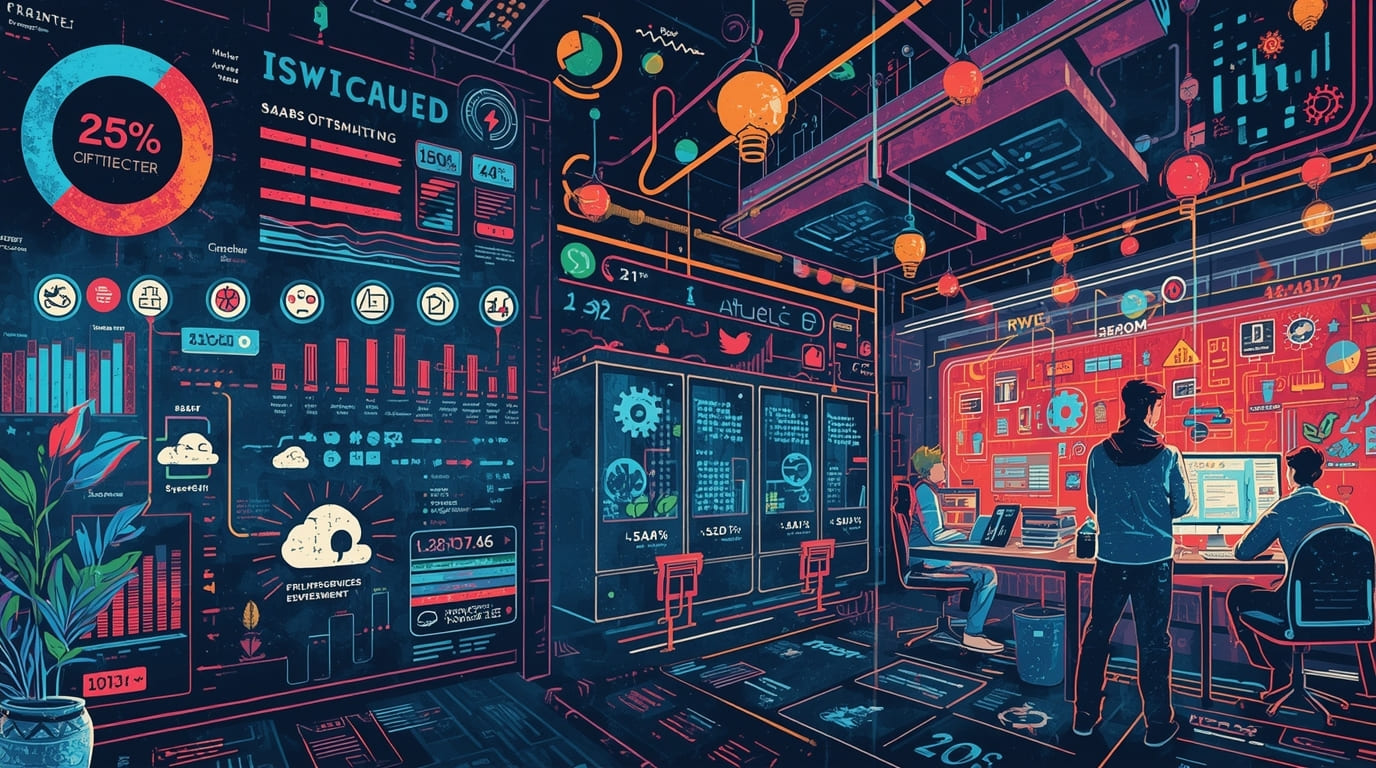Struggling with a bulky monolithic application that’s hard to scale and update? You’re not alone. Migrating from a monolith to microservices can solve these issues—but where do you start? In this guide, you’ll discover practical steps for decomposition and refactoring that make this complex transition manageable and efficient. Let’s cut through the confusion and get your architecture future-proof.
Understanding Decomposition: Breaking Down the Monolith
Decomposition is the critical first step when migrating from a monolith to microservices. Essentially, it means breaking down a single, large application into smaller, autonomous services that can evolve independently. This process not only reduces complexity but also improves scalability, maintainability, and deployment speed.
What decomposition means in the context of monolith migration
In a monolithic architecture, all functionalities—UI, business logic, and data access—are tightly integrated into one codebase. Decomposition entails identifying logical units within this codebase that can be separated as distinct services. Each microservice should encapsulate a specific business capability, communicate via well-defined APIs, and have its own data store where applicable.
How to analyze the monolith’s components and dependencies
To decompose effectively, begin by thoroughly analyzing the monolith’s current structure, dependencies, and pain points. Use static code analysis tools (e.g., SonarQube or Structure101) to map code dependencies and identify tightly coupled modules. Also, review database schemas and API endpoints to understand data flows and integration points.
A domain-driven design (DDD) approach is invaluable here. It encourages segmenting the application into bounded contexts—distinct business domains with clear boundaries. For instance, in an e-commerce system, ‘Order Management’ and ‘Inventory’ might form separate bounded contexts.
Techniques for identifying service boundaries
Defining service boundaries often involves combining DDD concepts with practical software metrics:
- Business Capabilities Mapping: Align services with real-world business functions.
- Data Ownership: Group entities accessed and modified together under a single service.
- Team Organization: Sometimes, boundaries align with development teams’ responsibilities.
- Event Storming: Engage domain experts and developers in workshops to map domain events and triggers, exposing natural boundaries.
- Vertical Slicing: Focus on slicing the application vertically through all layers (UI, business logic, data) rather than horizontally.
Tools that aid decomposition analysis
Modern tools can accelerate decomposition:
- Monolith Analyzer by Malhar Barai detects service candidates by analyzing code and communication patterns.
- JDepend evaluates package dependencies in Java applications.
- OctoPerf and New Relic assist in runtime behavior analysis, highlighting performance hotspots ideal for service separation.
Combining these methods with careful domain analysis ensures a decomposition grounded in both technical and business realities, setting a solid foundation for migration.
Refactoring Strategies for Microservices Migration
Refactoring is the backbone of transitioning from monolith to microservices. It involves restructuring code to improve modularity, maintainability, and extensibility without altering external behavior—vital to preserving system stability during migration.
Refactoring legacy code without breaking functionality
Legacy codebases generally lack tests, are tightly coupled, and may have accumulated technical debt. Begin by introducing automated tests if none exist, including unit, integration, and end-to-end tests. These tests act as safety nets for subsequent refactoring.
Apply the Strangler Fig pattern: incrementally replace parts of the monolith with microservices by routing certain functionality calls externally while leaving the rest untouched. This approach isolates refactoring risks and allows gradual validation.
Consistently apply code smells detection and remediation, such as eliminating duplicated code, reducing class sizes, and decoupling intertwined modules.
Incremental refactoring versus big-bang rewrite
Instead of a complete rewrite, which carries enormous risk and cost, incremental refactoring lets you migrate piece-by-piece:
- Incremental refactoring pros: lower risk, ongoing business continuity, fast feedback loops.
- Big-bang rewrite cons: high uncertainty, potential downtime, unforeseen complexities.
Adopt an agile mindset: extract one microservice at a time, deploy, and monitor before moving on.
Handling database and API redesign during refactoring
Data management is often the toughest challenge. Moving to microservices ideally means decentralizing databases—a single service owns and manages its persistent data.
Techniques to manage this transition include:
- Database decomposition through data replication or shared-nothing patterns.
- Saga patterns for eventual consistency in distributed transactions.
- Versioning APIs carefully to handle backward compatibility.
- Utilizing API gateways to abstract communication differences between old and new systems.
Don’t underestimate the importance of refactoring APIs alongside code to ensure smooth inter-service communication.
Using automated tests to ensure code integrity
Strong test automation is non-negotiable. Continuous Integration (CI) pipelines should run comprehensive regression tests to catch defects early.
Create contract tests to validate communication between services. This protects against integration failures when services evolve independently.
Include smoke tests post-deployment to ensure newly migrated microservices function correctly in production environments.
Step-by-Step Migration Process
Migrating from monolith to microservices requires a structured, phased approach. This section outlines a practical sequence to guide your journey.
Assessing and prioritizing components for migration
Start by evaluating which parts of the monolith are the best candidates for extraction. Prioritize components based on:
- Complexity and coupling (simpler first)
- Business value and criticality
- Frequency of change or deployment needs
- Pain points, e.g., performance bottlenecks or scaling issues
Create a migration backlog and roadmap that balances quick wins with strategic priorities.
Building and deploying initial microservices
Develop microservices with a focus on isolation and independent deployability. Use lightweight frameworks such as Spring Boot, Micronaut, or Node.js for rapid development.
Containerize services early using Docker to ensure consistent environments. Adopt Infrastructure as Code tools like Terraform for environment provisioning.
Deploy services using a Blue/Green or Canary rollout strategy to minimize impact on users.
Integration with existing systems and handling inter-service communication
Initially, hybrid systems co-exist: a monolith plus microservices.
Implement an API gateway layer to orchestrate calls between client apps and backend services, facilitating a smooth migration path.
Use asynchronous messaging where possible, with tools like Apache Kafka or RabbitMQ, to decouple services and increase scalability.
Define clear contracts for synchronous REST or gRPC calls where immediate responses are needed.
Monitoring, logging, and performance optimization
Post-migration, visibility is crucial. Implement centralized logging with tools such as ELK Stack (Elasticsearch, Logstash, Kibana) or Loki.
Use monitoring platforms like Prometheus combined with Grafana dashboards to track service metrics including latency, error rates, and throughput.
Apply distributed tracing (e.g., OpenTelemetry) to diagnose performance issues across service boundaries.
Continuously profile services and optimize bottlenecks, keeping costs and user experience in check.
Advanced Tactics and Future Trends in Microservices
The microservices landscape continues to evolve rapidly, offering innovative tools and frameworks that ease migration and operation.
Leveraging containerization and orchestration tools (e.g., Docker, Kubernetes)
Containerization with Docker standardizes deployments by packaging services and dependencies together. Kubernetes, now the de facto orchestrator, automates scaling, self-healing, and rolling updates.
Use Kubernetes Operators to manage complex stateful microservices efficiently. Consider lightweight orchestrators like K3s for edge or resource-constrained environments.
Implementing CI/CD pipelines for microservices
Continuous Integration/Continuous Delivery (CI/CD) pipelines automate code testing, building, and deployment, crucial for managing multiple microservices.
Leverage cloud-native tools such as GitHub Actions, GitLab CI, or Jenkins X, integrating them with container registries and Kubernetes clusters.
Feature flagging tools like LaunchDarkly allow decoupling deployment from release, enabling safe feature rollouts.
Using event-driven architecture and async communication
Event-driven microservices communicate asynchronously by producing and consuming events. This approach reduces coupling and increases resilience.
Apache Kafka and AWS EventBridge are popular event brokers supporting real-time data streaming.
Event-driven design also enables reactive systems that respond dynamically to workload changes.
Trends such as serverless microservices and service mesh
Serverless functions (AWS Lambda, Azure Functions) allow microservices to scale granularly without managing servers, ideal for sporadic workloads.
Service meshes (e.g., Istio, Linkerd) provide powerful network-level features such as service discovery, load balancing, security, and observability across microservices.
As microservices matures, these tools reduce operational overhead and boost development velocity.
Conclusion
Migrating from a monolith to microservices is no small feat, but with the right approach to decomposition and refactoring, you can modernize your architecture smoothly. Careful domain analysis and incremental refactoring minimize risks and keep your system stable throughout migration.
WildnetEdge has extensive experience guiding enterprises through this transformation, ensuring scalable and resilient systems that align with evolving business needs. Ready to take your application to the next level? Partner with WildnetEdge and start your microservices journey today.
FAQs
Q1: What is the best way to start decomposing a monolith into microservices?
Begin by analyzing your application’s domain and identifying bounded contexts using domain-driven design to define clear service boundaries.
Q2: How does refactoring help in migrating monolith to microservices?
Refactoring improves code modularity and reduces dependencies, making it easier to isolate services and prevent system disruption during migration.
Q3: Can I migrate to microservices incrementally or do I need a full rewrite?
Incremental migration is recommended—it allows you to gradually extract and deploy services, reducing risk and preserving business continuity.
Q4: What tools assist in monitoring microservices post-migration?
Tools like Prometheus, Grafana, and ELK Stack help monitor service health, performance, and logs for proactive maintenance.
Q5: How important is automated testing during this migration?
Crucial—automated tests validate functionality after each refactor and deployment, ensuring the system remains stable throughout migration.

Nitin Agarwal is a veteran in custom software development. He is fascinated by how software can turn ideas into real-world solutions. With extensive experience designing scalable and efficient systems, he focuses on creating software that delivers tangible results. Nitin enjoys exploring emerging technologies, taking on challenging projects, and mentoring teams to bring ideas to life. He believes that good software is not just about code; it’s about understanding problems and creating value for users. For him, great software combines thoughtful design, clever engineering, and a clear understanding of the problems it’s meant to solve.
 sales@wildnetedge.com
sales@wildnetedge.com +1 (212) 901 8616
+1 (212) 901 8616 +1 (437) 225-7733
+1 (437) 225-7733































